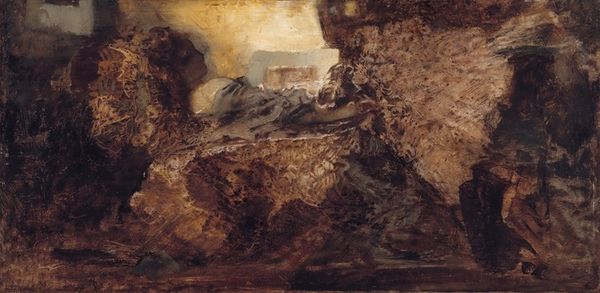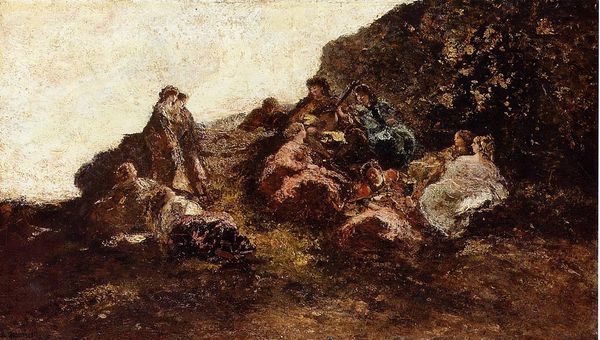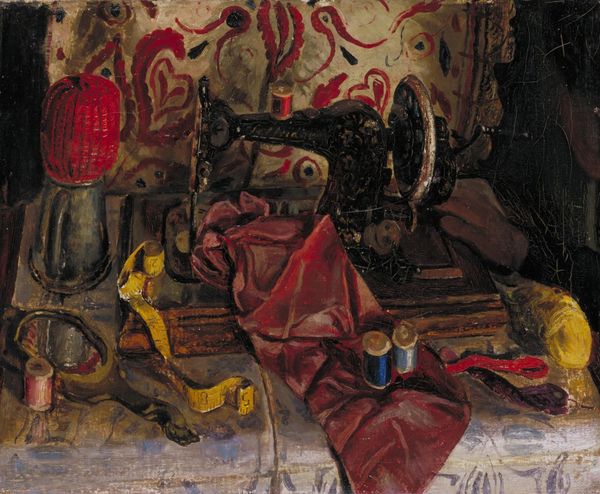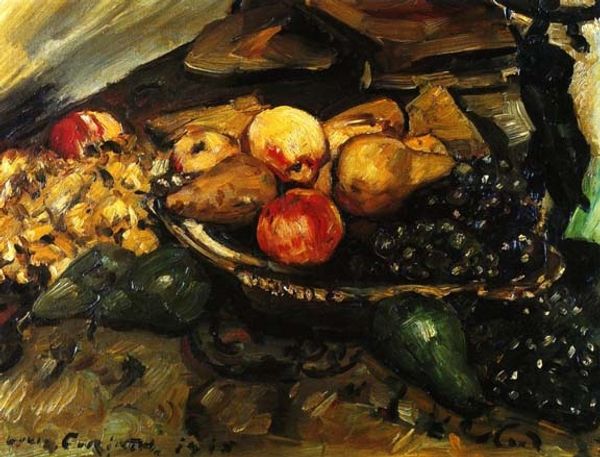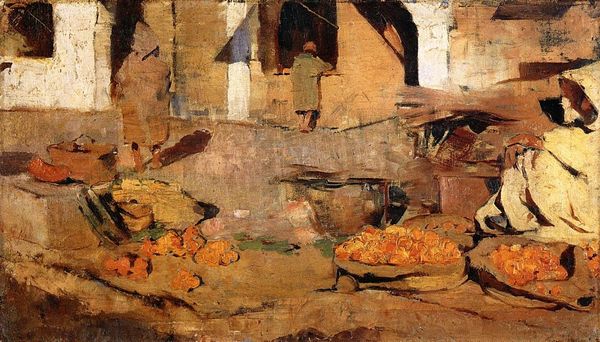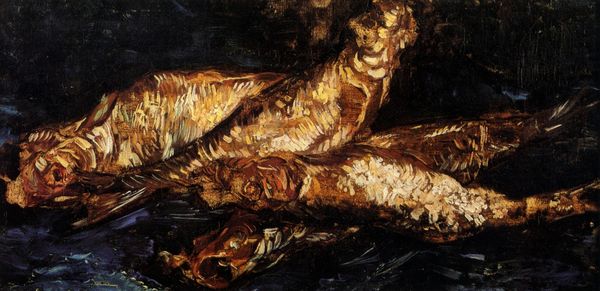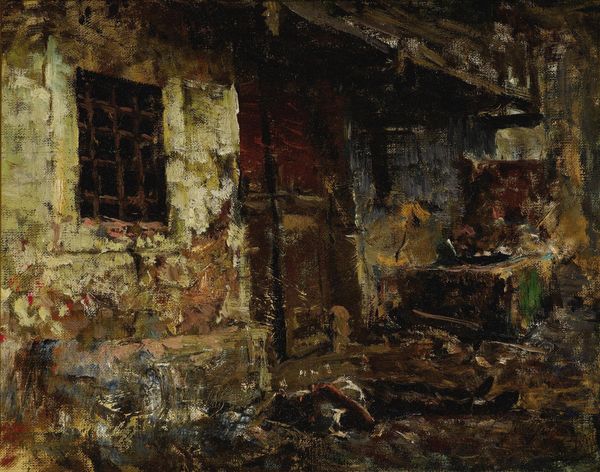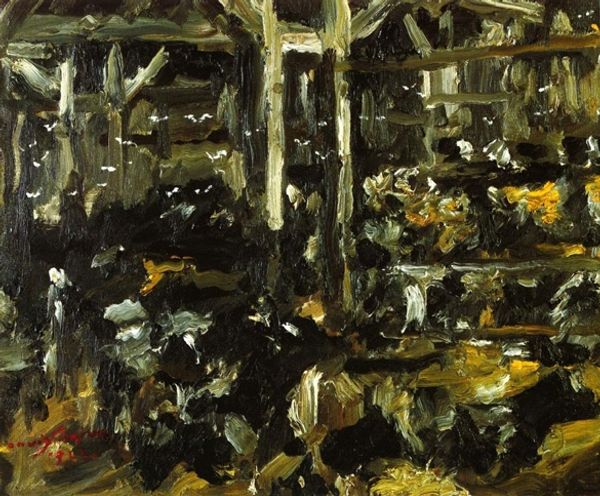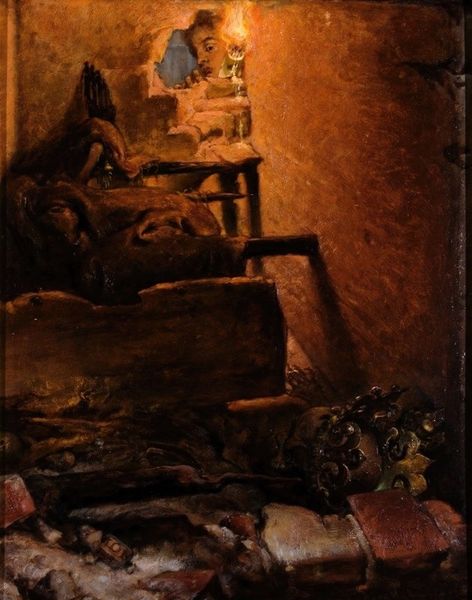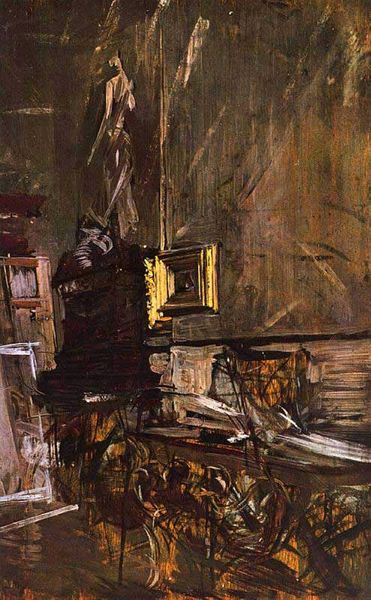
matter-painting, oil-paint, impasto
#
matter-painting
#
oil-paint
#
oil painting
#
impasto
#
france
#
post-impressionism
Copyright: Public domain
Curator: This is Adolphe Monticelli's "Still Life with Sardines and Sea-Urchins," created around 1882. It’s an oil painting currently residing here at the Dallas Museum of Art. The piece showcases his distinct impasto technique. What are your initial impressions? Editor: Immediate thoughts? Texture! It feels almost sculptural. There's a frenetic energy to it, not your typical placid still life. Almost visceral. The color palette is rather subdued. Is that intentional, do you think, or is it simply the aging of the oils? Curator: I'd say it's more deliberate. Monticelli’s impasto is always a striking feature, as you point out. Think about his time and the movements swirling around him, especially Impressionism and the rise of bourgeois consumer culture. Still lifes were hugely popular, and he offers us something of a darker twist. It pushes against the glossy, appealing presentations typical of that genre. Editor: A subversion then? Given the context of late 19th century France, particularly in Marseilles where Monticelli was based, you can almost smell the salt in the air looking at this. Sea urchins, in particular, held various class connotations at the time—were they more for the common worker, perhaps? Curator: Precisely. Placing these less conventional seafood items front and center, particularly the sea urchins, which were perhaps more available to the working classes, is intriguing. The traditional still life of the time often portrayed lavish goods meant for the wealthier classes. It hints at the social stratifications present within Marseilles’s bustling port. Editor: There's a deliberate "ugliness" to it, and that resonates, disrupting conventions. You mention class, and it also seems to speak to the often romanticized "natural" bounty without filtering out elements society may have found unpleasant at the time. I almost get a political reading there, whether Monticelli meant it that way or not. Curator: And, again, thinking of the post-impressionistic approach—it’s not photorealistic, and more interpretive and emotionally charged. Some see premonitions of Van Gogh in the painting style and some see parallels to Cézanne as well. The textures add emotional heft as opposed to a straightforward depiction of comestibles for enjoyment and celebration. Editor: So, while deceptively simple in subject matter, "Still Life with Sardines and Sea-Urchins" is, in fact, a painting pregnant with considerations surrounding society. Very intriguing to approach this considering socio-political interpretations versus something pretty and pleasing to the eye. Thanks! Curator: Exactly! This prompts us to think critically not just about the art, but also the surrounding society and cultural context of its origin. A pleasure to ponder it all with you!
Comments
No comments
Be the first to comment and join the conversation on the ultimate creative platform.
